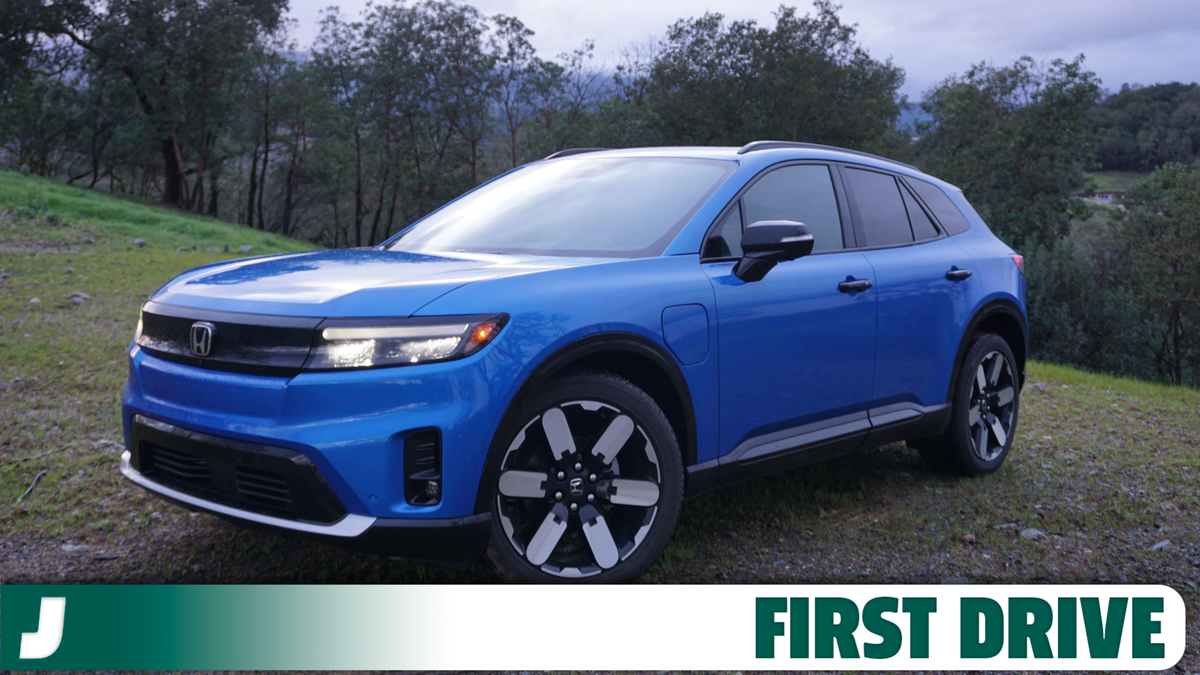The 2024 Honda Prologue is not a Honda. It just isn’t. The Japanese automaker can talk all it wants about how this car is designed to look and feel like a Honda, but it only achieved half of its goals. Sure, the 2024 Prologue looks like a Honda (on the outside, at least), but everything else about this electric crossover screams General Motors.
For better or worse, the Prologue lives up to its name. It’s a car that will one day be looked at as a curiosity Honda sold before it made its own electric vehicle for the U.S. Regardless, the Prologue is a new car, so we need to review it.
I promise this isn’t all going to be negative. Some things about the Prologue are even fairly good, but no matter what anyone tells you, this is not a Honda. To its very core, the Prologue is a GM Ultium platform vehicle, and there isn’t anything that can be done to hide that fact.
Anyway, let’s put that all to the back of our minds, and look at the Prologue as if it is in an EV vacuum, as impossible as that may be.
Full Disclosure: Honda flew me out to northern California, put me up in an extravagant hotel and paid for my meals all so I could sample the 2024 Prologue.
Driving And Efficiency Of The 2024 Honda Prologue
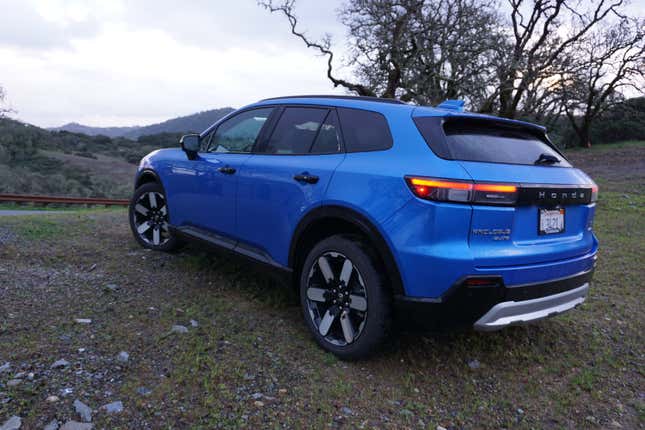
Are you familiar with the word mundane? Good, that means you know exactly what the 2024 Prologue is like to drive. I’m not being needlessly mean, either. That’s sort of the point with this car. It’s supposed to be relaxing and ordinary-feeling enough to get non-EV buyers to think twice about electric cars.
It drives like everything else GM’s Ultium platform underpins. I’ve only driven the Cadillac Lyriq, which this car shares a platform with, and it felt very similar. I talked to some other folks who review cars for a living, and they agreed. This thing feels like a Chevy to drive, even if Honda says they’ve done some of their own tuning to the steering and driving characteristics. Maybe I’m thick, but I just don’t see it.
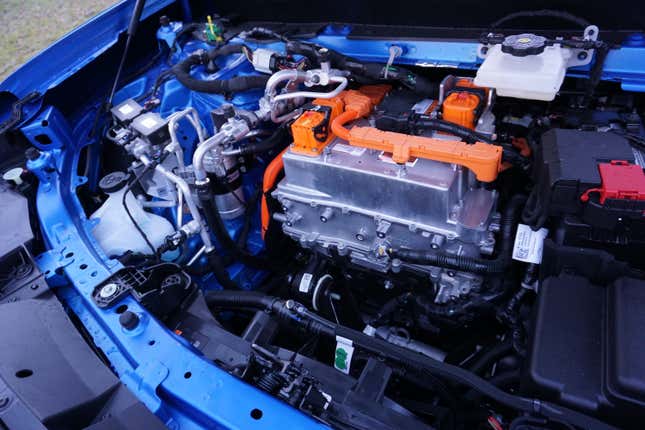
In terms of performance, it has some, but not very much. It’s definitely on the lower end when it comes to electric vehicle performance. There’s no breakneck acceleration to be found here. The exact vehicle I drove was a top-of-the-line Prologue Elite with all-wheel drive that’ll cost you just a bit under $60,000 including destination. Its two motors push 288 horsepower and 333 lb-ft of torque to all four 21-inch 275-section wheels (the largest ever fitted to a Honda!).
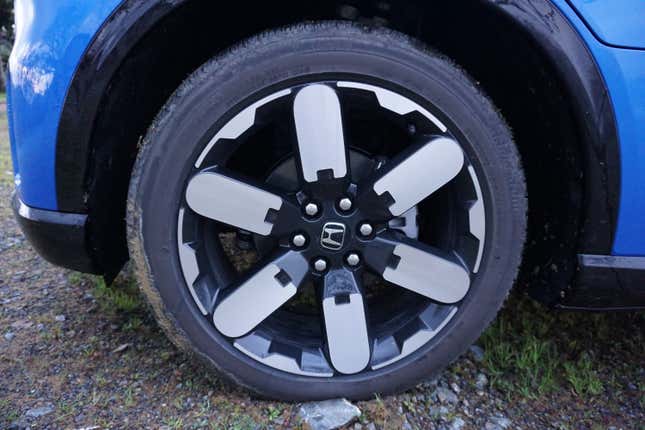
We don’t have acceleration numbers yet, but my ass tells me it’s probably somewhere in the high five-second range. Maybe low-sixes. Either way, it’s not going to make you nauseous, even in sport mode. I cannot imagine what a less-well-equipped Prologue with front-wheel drive and 212 horsepower will feel like, but if I had to guess, it would feel slower than you’d expect for the $48,795 starting price in EX trim. Anyway, speaking of sport mode, it doesn’t really do all that much. In sport, the electric steering rack gets very heavy in an artificial sort of way, and the accelerator is a bit sharper. Leave it in Comfort or Eco. That’s where the Prologue is meant to be.

Still, it isn’t a bad car to drive. It just isn’t really anything to write home about. The Prologue Elite is meant to be a comfortable cruiser for the 273 miles of range the EPA says it gets. I didn’t do a full range test on my limited first drive, but it seemed that the EPA range number is probably right where it’s supposed to be. On the subject of efficiency, the Prologue Elite is sort of middle of the pack. On my journey, which consisted of a lot of highways, I averaged about 2-2.5 miles per kWh. When compared to the Kia EV9, a much bigger vehicle, it falls a bit short. That crossover was able to manage over 3.5 miles/kWh, and that number could get even higher if you really tried.
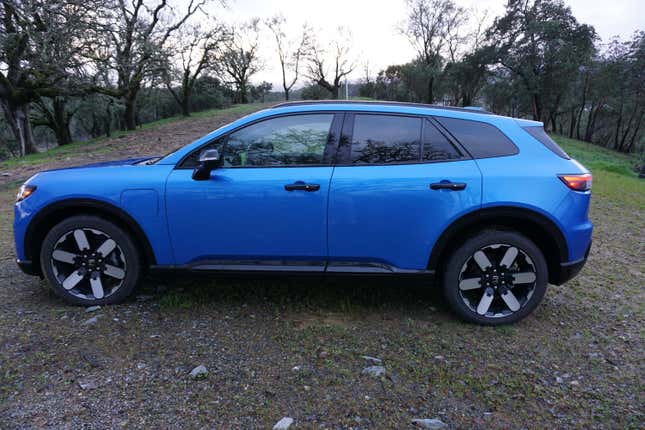

The Prologue Elite comes with Honda’s full suite of safety features, including radar cruise control, rear cross-traffic braking and blind spot assist. It all works fairly well, as you’d expect really. I do wish it was offered with GM’s Super Cruise, which is truly excellent, but alas. I understand why it’s absent.
This is an EV, so we should probably talk about charging, right? Right. Well, Honda says the Prologue can DC fast charge at 155 kW. That’s enough to give the EV’s 85 kWh lithium-ion battery pack 65 miles of juice in about 10 minutes. These aren’t the most impressive numbers of all time, but it’ll get the job done.
2024 Honda Prologue: GM Design On The Inside, Honda Styling On The Outside

Did I tell you this thing felt like a GM product? Oh boy, that statement is so troublingly true on the inside. I’m not kidding, if you cover up the Honda badge on the steering wheel, you’d immediately just assume you were in a Chevrolet or something of that ilk. All of the buttons, knobs, switch gear, and touchpoints are lifted right out of GM’s parts bin. Even the column-mounted shifter (which is always welcome on an EV) is straight from General Motors.
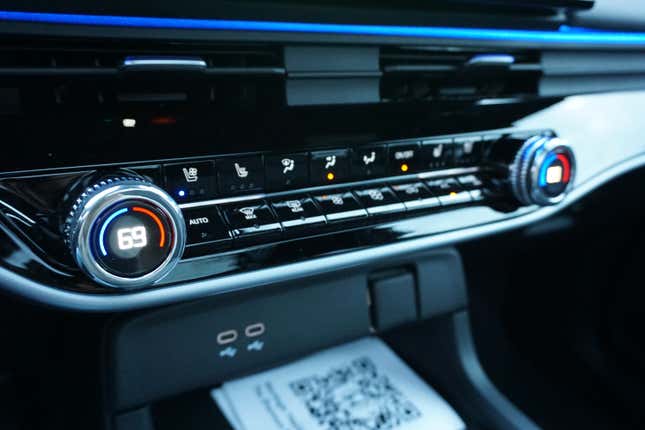
Even the goddamn seats, 11-inch gauge cluster screen, 11.3-inch center screen, wireless phone charger and the head-up display are straight out of GM vehicles.
That being said, they do work well, and it even comes with Google built-in. Lovely. However, it is so clearly just a reskin on GM’s operating system to make the graphics look slightly more Honda-ish… emphasis on ish. I guess you could say everything works the way it’s supposed to – even if the GM switchgear is staring you right in the face, daring you to say something (looking at you, piano black HVAC controls).
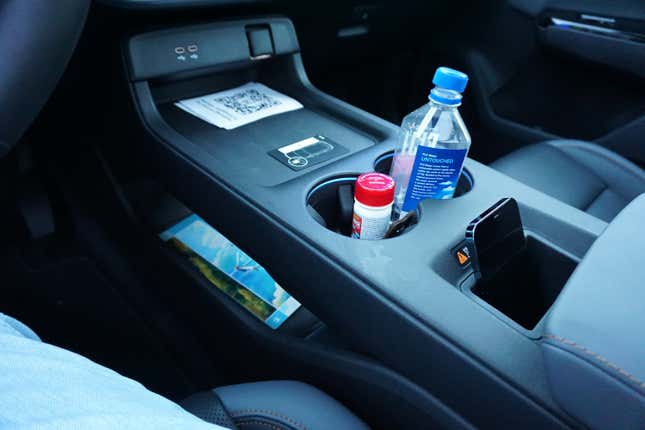
Material-wise the Prologue Elite was okay. There was nothing outright offensive inside this EV – except for the center console. I don’t know if it was because my tester was a preproduction car, but this is some of the nastiest, cheapest, hardest plastic I’ve come in contact with in a long time.
I’m talking early-aughts GM-levels of cheap plastic. Other than that, everything else was mostly OK. I don’t have many other complaints about the interior other than it’s a little bit, well, boring. There are two color options: black and gray. As you can imagine, those aren’t exactly inspiring.
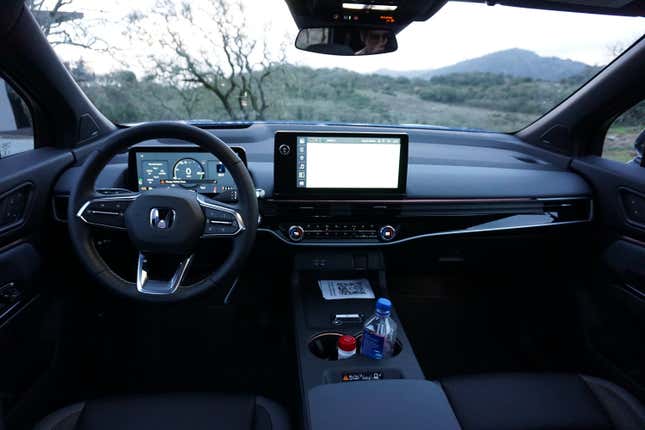

One area the Prologue really excels in is – um – area. There is so much space inside the Prologue because of its excellent packaging and size. At 192 inches long, it’s only about three inches longer than a Honda Passport, but because it’s an EV, its wheels are pushed out to the corners. That means its 121.8-inch wheelbase (which Honda says is the longest in its class) is a whopping 11 inches longer than the Passport. Because of this, there’s oodles of space just about everywhere.
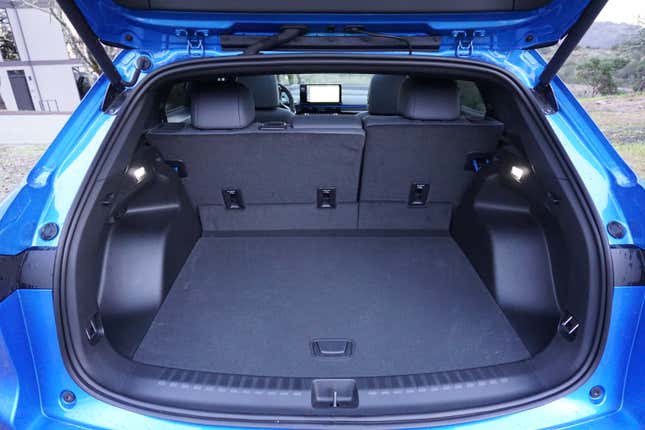
The front passenger compartment is very open and airy, and the second row has plenty of head and legroom, even for me at about 6’1”. Then, behind the rear seats is ample cargo room – about 25 cubic feet’s worth. Put the rear seats down, and you’ve got nearly 58 cubic feet of cargo space. Not too shabby.
Why The 2024 Prologue Lives Up To Half Its Name
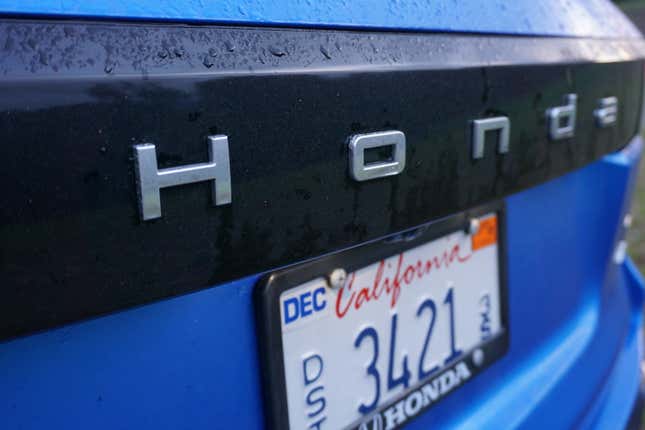
I don’t want you all thinking to Prologue is a bad car. It isn’t. It’s a fine car – maybe even a decent one. However, the market for compact-to-mid-sized electric crossovers is competitive, and being decent probably isn’t going to get the job done for most people.
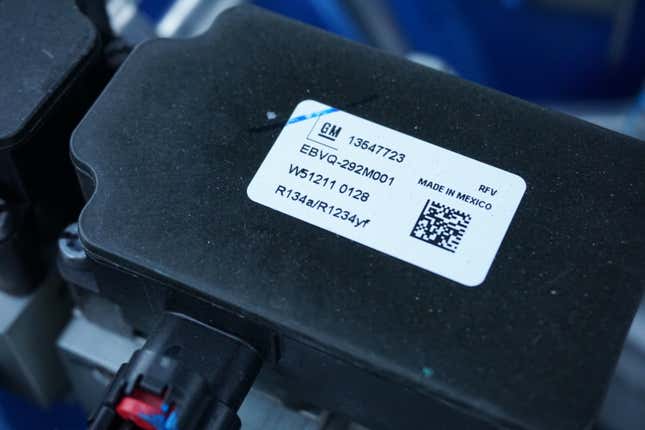
The Honda Prologue just isn’t a Honda. It’s a Chevy Blazer EV in Honda clothes – very nice clothes, to be fair. If you wanted an electric Honda, I’ve got bad news for you. This is not it. So, while it isn’t a Honda, it is most certainly a “prologue.” Honda has big plans for its electric vehicle, both in-house and with its Afeela partner, Sony. In a few years, Honda is going to have a handful of its own EVs running around, and the SHM Afeela sedan will be right alongside them.
That all makes the Prologue feel like a bit of, well, a prologue. It’s a preview of things to come, and much like the prologue of a biography you were assigned to read in high school, you can probably skip right over it.

